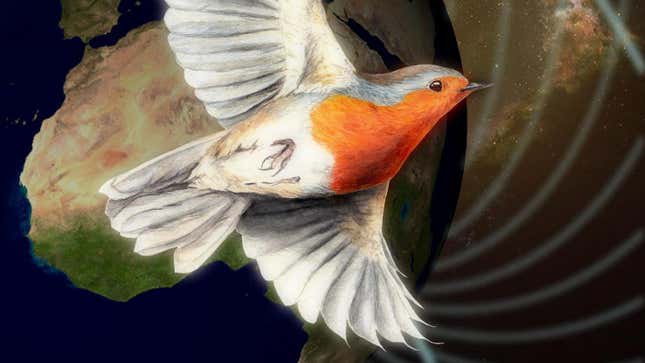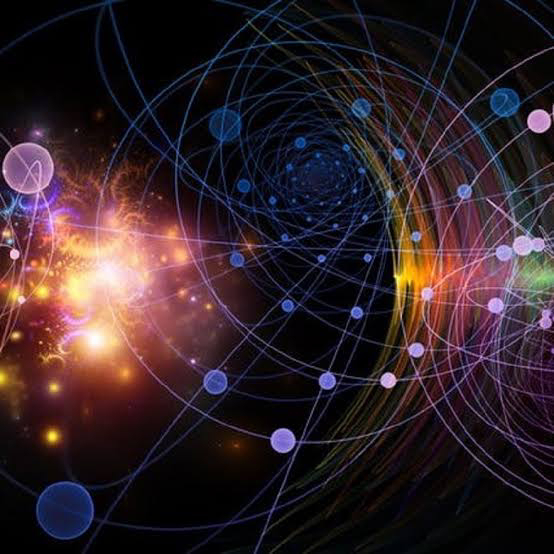Birds Use Quantum Mechanics to See Magnetic Fields, New Research Suggests
In a step toward confirmation, Xu’s team has now observed, in great detail, how the protein responds to magnetic fields when isolated in a test tube. Their study is published in Nature. “This particular paper has added an important stack of evidence in support of the cryptochrome mechanism,” said neuroethologist Eric Warrant of Lund University, who was not involved in the research.
The researchers studied cryptochrome-4 that they produced themselves, rather than proteins extracted from actual birds. To make cryptochrome-4, they introduced the DNA instructions to produce the protein into E. coli bacteria. The bacteria read the instructions and made the proteins. “The protein you get out of the bacteria is identical to the one in the bird,” said biologist Henrik Mouritsen of the University of Oldenburg.
Then, the team orchestrated and observed the protein undergoing chemical reactions within a test tube placed in magnetic fields about a hundred times stronger than Earth’s. Comparing variants of the protein found in different bird species, they found that cryptochrome-4 in the migratory European robin is more sensitive to magnetic fields than the cryptochrome-4 found in chickens and pigeons, which don’t migrate. In addition, their observations indicated that cryptochrome-4 could plausibly trigger neuron activity—thus communicating with a bird’s brain—through its chemical reactions. “The [reaction products] exist for long enough and are produced in sufficient quantities to act as a signalling substance,” said Warrant.
The team wanted to better understand how the protein activates bird neurons. To that end, they simulated the chemical reactions of cryptochrome-4 on a computer. These reactions, which change the shape and composition of the protein, involve the motion of single electrons—meaning we’re in the realm of quantum mechanics.
In these reactions, light strikes and deforms the protein, which consists of a chain of molecules folded into itself. This deformation triggers electrons in part of the chain to hop from one link to the next to form a pair of molecules. Both of these molecules have an odd number of electrons, which pair up—leaving one unpaired electron. The two unpaired electrons from each molecule then form a duo themselves, with their quantum spins pointing in opposite directions.
Here’s where the quantum mechanics comes in. The spins of the two electrons start fluctuating, with one electron flipping in direction so their spins are aligned, and then flipping back, about a million times a second. While the electrons’ spins are aligned, it creates more reaction products for the neurons to respond to than when the spins are opposite. The amount of time that the electrons spend aligned or not depends on the direction of the magnetic field. Thus, the bird’s neuron response depends on the direction of the magnetic field. Similar to how the neurons in our own eyes respond to different wavelengths of light and send information to our brains that gets interpreted as color, it’s plausible that the birds’ neurons relay information about magnetic fields—thus allowing birds to see magnetic fields and navigate by them.
It’s a significant step toward verifying cryptochrome-4’s role in magnetic sensing, especially because scientists’ understanding of this sense pales in comparison to their knowledge of other senses, such as vision and hearing. “The way animals sense magnetic fields is a mystery,” said Warrant. “We don’t know much about it. It’s the last great holy grail of sensory biology.”
The new research builds on work from as early as the 1960’s, when scientists placed European robins in a dark steel chamber and discovered that they reoriented their direction according to weak magnetic fields. Since then, researchers have steadily worked to connect the birds’ behavior with their biology. In this study, Mouritsen’s team relied on a new technique for observing microscopic systems capable of capturing nanosecond-speed changes in the protein to observe the details of the chemical reactions.
However, the study doesn’t conclusively prove that birds use cryptochrome-4 to sense magnetic fields. To do that, researchers ultimately must study the protein in action within a living bird. “We’re working on it,” said Mouritsen. “But I can’t guarantee you any timeline of that because it’s very, very challenging.” It’s a tall order, but at least they’re flapping in the right direction.



Comments
Post a Comment